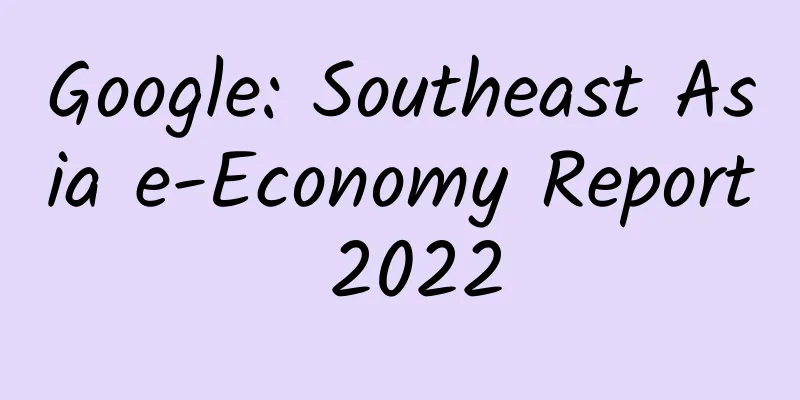Google: Southeast Asia e-Economy Report 2022

|
Google released the "Southeast Asia e-Economy Report 2022", the main findings include: Coping with macroeconomic headwinds Just as Southeast Asian countries were beginning to return to pre-pandemic normalcy, global headwinds began to set in, threatening to derail a full economic recovery. Rising interest rates and high inflationary pressures have also been weighing on consumer demand, especially in the discretionary sector that is at the heart of the digital economy. Approaching $200 billion amid turbulent waters Despite these macroeconomic headwinds, SEA’s digital economy is on track to reach a gross merchandise value (GMV) of approximately $200 billion by 2022. In fact, it reached the expected threshold three years ahead of schedule. Even today, digital adoption continues to rise, albeit at a slower pace than at the height of the pandemic. Urban consumers still drive the economy In urban areas, affluent consumers and their young digital natives continue to represent the largest part of the digital economy. For both segments, growth opportunities lie in deeper engagement, including more frequent and valuable orders, cross-selling services such as subscriptions or consumer loans. At the same time, spending by “budget-constrained” urban and suburban consumers remains low, leaving digital players to find more economically sustainable ways to serve enjoyment. Industries face different growth trends SEA's digital economy sectors follow three distinct trend lines. E-commerce follows an S-shaped growth curve, continuing its growth trajectory but starting from a higher point after a sharp acceleration during the pandemic. Other businesses such as food delivery and online media are returning to their trend line after two years of surging. Finally, travel and transportation are following a U-shaped recovery, still miles away from pre-pandemic levels. Favorable conditions to enhance financial services Driven by the shift from offline to online and the positive financial markets of the past few years, the adoption and use of digital financial services (DFS) has been booming across the board. However, with rising interest rates and a riskier lending environment, fintechs, platforms and newly launched digital banks will face stress tests on their business models. At the same time, banks and insurance companies are rapidly digitizing their services and maintaining their support for affluent consumers. |
>>: China Tourism Academy: 2022 National Tourist Satisfaction Survey Report
Recommend
Hahahahahaha! The hilarious commentary is here again! Why does everyone love Wang Meng?
Expert of this article: Zhao Wei, deputy chief ph...
They are not the same species, I almost believed it
In the human world, people often look alike. It&#...
Oyster dosage
Oysters are a common seafood. They can be eaten d...
What are the medicinal values of common scarab beetles?
The scarab beetle is a very common insect in the ...
Which will give you a greater radiation dose: smoking a pack of cigarettes, eating a banana, or working in a nuclear power plant for a year?
Let me first tell you the conclusion. Cigarettes ...
What is the medicinal value of epimedium?
Epimedium has many medicinal values. For example,...
The "personalities" of different beans are revealed. From germination to grain formation, every step of growth requires careful care!
Soybeans, mung beans and broad beans are among ou...
What are the taboos of Cordyceps Flower and how to eat it for the best effect?
Many people usually pay attention to their physic...
High-speed trains are much faster than trains, but why do they appear to be about the same speed when viewed from the window?
Have you noticed when you are riding a train? Hig...
Is it good to eat motherwort for menstrual disorders?
There are many reasons for menstrual disorders, b...
The efficacy and function of ramie
Glehnia littoralis is a kind of traditional Chine...
436 plastic-eating microorganisms: Can they solve the plastic crisis?
In forests, some fungi attach themselves to trees...
A sudden "stabbing pain" in the chest for a few seconds, is it a sign of sudden death or a heart attack?
Have you ever had this experience: your chest sud...
The efficacy and function of the safflower
Many people are not very clear about the effects ...









